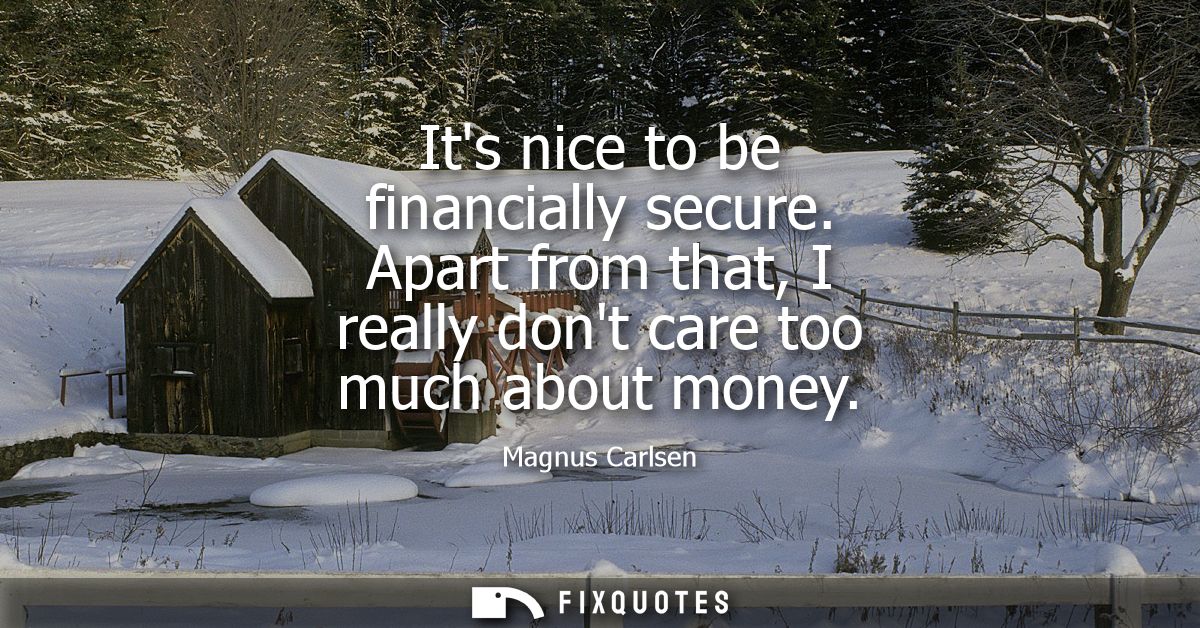"It's nice to be financially secure. Apart from that, I really don't care too much about money"
About this Quote
Carlsen draws a sharp line between money as a tool and money as a goal. Financial security is treated as a buffer against uncertainty, a way to buy freedom from anxiety, time to think, and the autonomy to choose one’s path. Beyond that threshold, the marginal value of more wealth rapidly fades. What endures is the intrinsic pull of mastery, the joy of problem-solving, the beauty of ideas well executed. By sidelining money as a measure of success, he puts attention back on craft, competition, and curiosity, the engines that make elite performance sustainable.
Within the world of chess, this stance has practical consequences. Security grants the latitude to play where the challenge is richest, rest when motivation wanes, and experiment without the fear that a creative risk will exact a financial penalty. It clarifies why prestige and prize funds do not always dictate his schedule; autonomy and mental well-being take precedence. Endorsements and winnings become instruments that finance independence, not tokens of identity. That distance from money’s symbolism protects the mindset needed for enduring excellence: a beginner’s openness to learn, the courage to explore unfamiliar lines, the willingness to prioritize long-term growth over short-term gain.
There is also a note of realism and humility. He does not romanticize insecurity; having “enough” is acknowledged as undeniably “nice.” The ethic implied is sufficiency: let money serve life rather than define it. In a culture that interprets net worth as a proxy for worth, he offers a different scoreboard, quality of play, meaningful work, and time spent on what matters. The message is not anti-wealth but anti-attachment: treat money as a quiet enabler, not the protagonist. Security provides the floor; purpose sets the ceiling. Freed from the compulsion to chase more for its own sake, attention can return to the enduring satisfactions that money cannot purchase.
More details
About the Author

